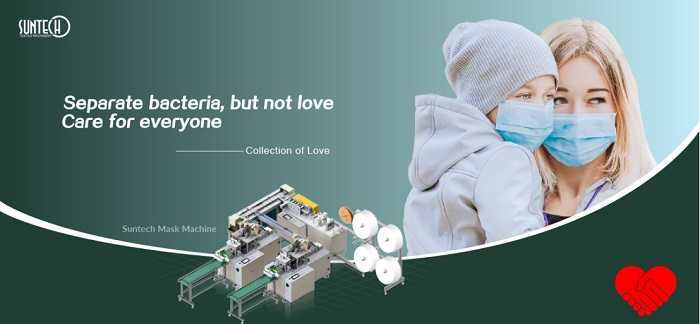With the arrival of the cold winter, covid-19 is making a comeback, and the epidemic at this time seems to be more serious than in 2020.
At present, there are more than 87.79 million confirmed cases of covid-19 worldwide, and more than 1.89 million deaths. The United States is the most severely affected country in the world, with more than 21.5 million confirmed cases and 364,000 deaths.(Click to share to LinkedIn)
Of the 53 countries under the responsibility of the WHO Regional Office for Europe, 22 countries have found variant covid-19 strains. The mutated virus is more contagious, and the severity of the disease has not changed.
Japanese Prime Minister Yoshihide Suga announced on the evening of the 7th that Tokyo and surrounding Kanagawa prefectures, Saitama prefectures, and Chiba prefectures will implement a state of emergency from January 8th and will tentatively last until February 7th.
India became the second country after the United States with more than 10 million people infected. Relevant media gave a shocking statement that 60% of people in India have been infected, or it is already the most severely affected area in the world. Whether the global epidemic is controlled will depend on India.
India now has a population of 1.3 billion, which is the second most populous country in the world. If 60% of the people are really infected, the number will reach a shocking 780 million.
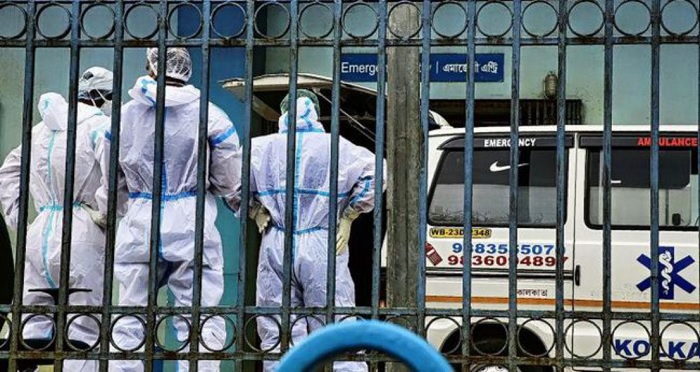
Before we can understand the ins and outs of the spread of the virus, there is no way to prevent and control it. The popularization of vaccines will take time and the effect is difficult to judge. The best defense measure is still to wear a mask. Faced with such a fierce covid-19, if everyone wears masks, can the production capacity of masks keep up?(Click to share to Facebook)
What is the production capacity of masks?
Can the supply of masks keep up with the epidemic?
According to official data, China's daily output of masks in early 2020 was only 8 million. With the emergency resumption of production and work of related companies, a large number of new factories and new production lines were launched urgently, by February 29, China's daily output of masks had reached 116 million. In 2020, from masks, protective clothing, goggles, to hand sanitizers and testing kits, China, as the “world factory”, will continuously “transfuse” more than 200 billion masks and 2 billion pieces to more than 200 countries and regions around the world. Protective clothing, 800 million test kits.
In the first half of 2020, China is the world's largest supplier of masks, accounting for 56% of the world's total exports. WTO data shows that in the United States and Italy, Chinese masks account for nearly three-quarters of the total masks imported by these two countries, and in Japan it accounts for 80%.
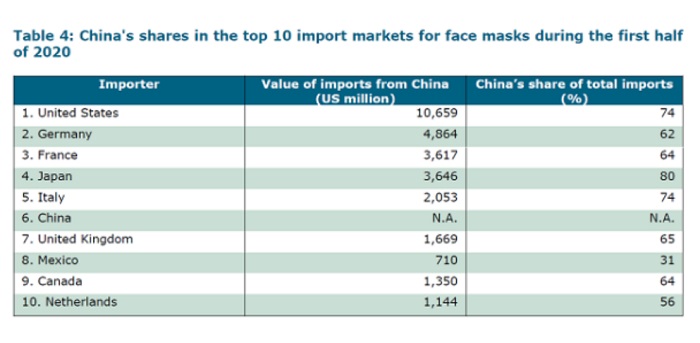
From March 1 to October 18, China exported a total of 37.7 billion masks to the United States, an average of more than 100 masks per American. It can be seen that even if the production capacity of masks in severely epidemic countries is insufficient, China's mask production capacity is sufficient to meet the needs of international epidemic prevention.
Intelligent production expands production capacity
The large production capacity of masks in China is due to the extremely high production efficiency. Especially after the birth of the integrated fully automatic smart mask production line, the production speed has been greatly increased up to 160 pieces per minute, with a daily output of 230,000 pieces, a monthly output of nearly 7 million pieces, and an annual output of only 100 million pieces, and the entire process only requires An operator (see Suntech high-speed 1+2 mask machine), the total cost is controlled within 100,000 US dollars.
Compared with the previous traditional mask factory, the smallest mask also needs 10 workers, plus a mask forming machine, a mask pressing machine, a mask trimming machine, a breathing valve punching machine, a nose bridge line fitting machine, and ear strap spot welding The total investment is about 500,000 U.S. dollars in equipment, such as air compressors, breathing valve welding machines, etc. However, due to limited production capacity, the stocking period is very long.
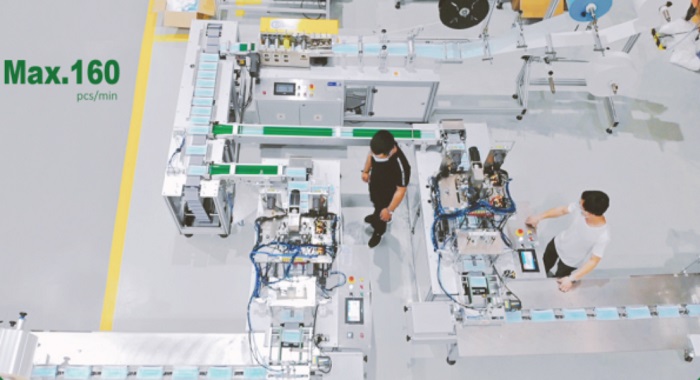
Is the mask production process cumbersome?
What is the key to production?
The production of masks is simple and simple, but difficult to say. But most of the homemade simple masks cannot play the role of bacteria isolation, because the key layer-melt blown cloth is missing.
Mask composition:
Common medical masks are mainly composed of three layers of non-woven fabrics. The inner layer is an ordinary non-woven fabric; the outer layer is a waterproof non-woven fabric, which is mainly used to isolate the liquid sprayed by the patient; the middle filter layer is an electret-treated polypropylene melt-blown non-woven fabric; Finally, after the production is completed, it must be sterilized and visually inspected, and the unqualified masks will be sealed, packaged, and shipped away after screening.
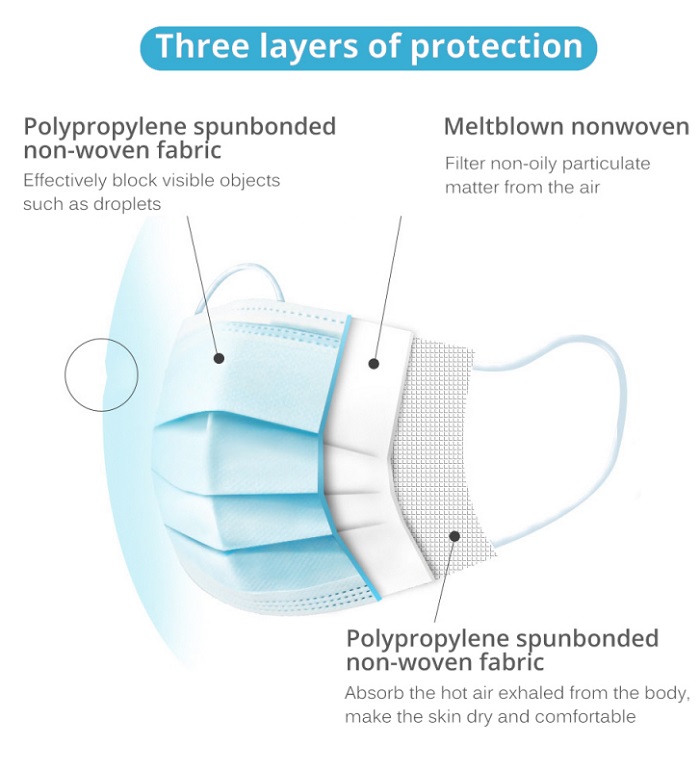
The core material of medical masks is the polypropylene meltblown non-woven fabric after electret treatment, which is the key to filtering covid-19 aerosols.
Mask production process
1. Raw material: polypropylene (PP) particles
The polypropylene particles produced from chemical plants grow like this, and most of the plastic kettles and tableware are made of polypropylene.
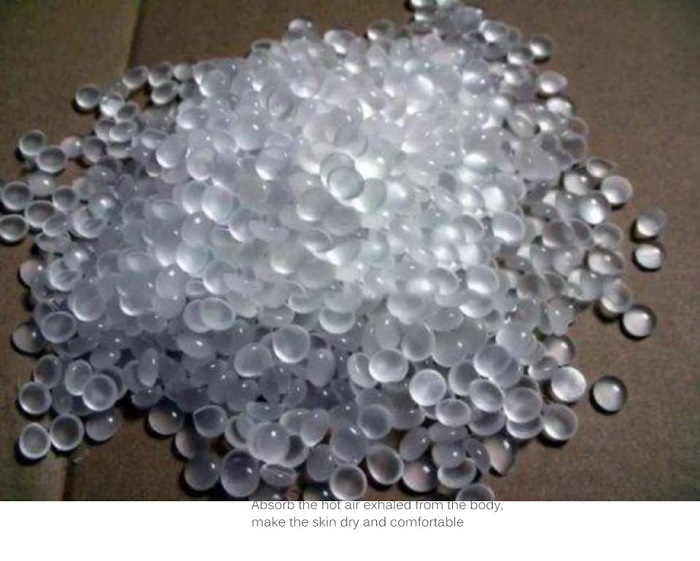
2. Polypropylene fiber production
Just as textiles require plant fibers, the production of non-woven fabrics also requires fiber materials. Polypropylene particles are melted and shaped into polypropylene fiber material, which is the core raw material for the production of masks. The picture below shows polypropylene fiber.
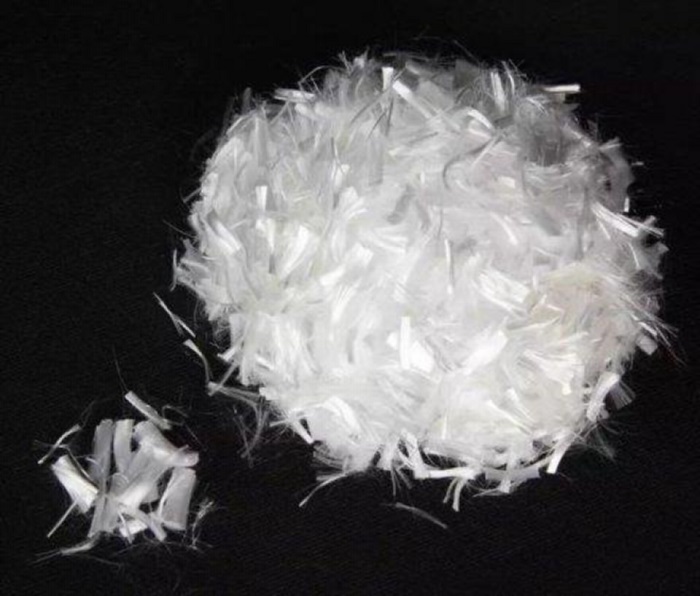
The output of polypropylene fiber in China in 2019 is about 1.7 million tons, of which about 950,000 tons of high-melting polypropylene fiber can be used for masks. The production units include Sinopec’s Zhenhai Refining & Chemical, Shanghai Secco, Jingmen Petrochemical, Hainan Refining & Chemical, Maoming Petrochemical, Shijiazhuang Refining & Chemical, Guangzhou Petrochemical, etc., with continuous supply.
3. Meltblown non-woven fabric production
The melt blown method is a polymer extrusion non-woven process. It is a filter material with ultra-fine filtering effect developed by the US Navy in 1954 to collect radioactive particles produced by nuclear tests. Then around 1965, Exxon, 3M and other companies manufactured The first generation of meltblown nonwoven equipment.
The principle of the process is to use high-speed hot air to draw the thin stream of polymer melt extruded from the orifice of the die, thereby forming ultra-fine fibers and condensing on the net curtain or drum, relying on self-bonding to become a non-woven fabric , The principle of spinning is as follows:

The meltblown material is made by heat-melting its own fibers. The thicker meltblown non-woven fabric is produced by the meltblown method. The random fibers and interlayers are arranged crosswise to form a multi-curved channel structure of the meltblown material, so that the particles (covid-19 gas Sol) will collide with the fiber and be retained.
The focus of the painting: The filtering mechanism of medical masks is Brownian diffusion, retention, inertial collision, gravity sedimentation and electrostatic adsorption. The first four are all physical factors, which are the natural characteristics of non-woven fabrics produced by melt blown method. The filterability is about 35%, which does not meet the requirements of medical masks. We need to electret the materials to make the fiber bands Charge, use static electricity to capture the aerosol where covid-19 is located. So, there is the next step-electret processing.
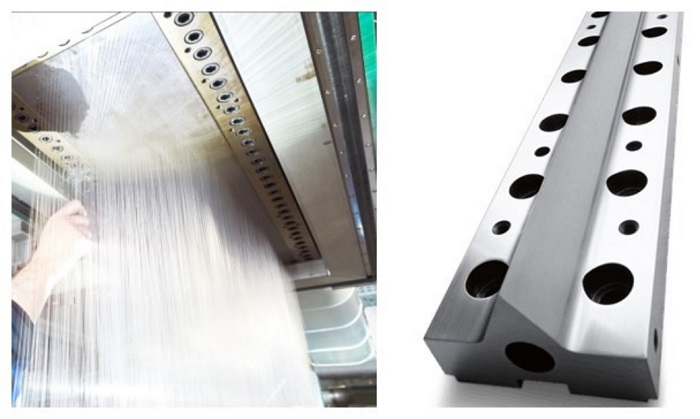
4. Electret processing
Electrostatic adsorption is the capture of covid-19 droplets (aerosols) through the Coulomb force of charged fibers. The principle is to make the surface of the filter material more open, the ability to capture particles can be grabbed, and the charge density increases, and the particle adsorption and polarization effects are stronger. Therefore, the meltblown non-woven filter material of the filter layer must be passed through Extreme treatment can achieve 95% filterability without changing the respiratory resistance to effectively prevent viruses.
Masks must achieve a barrier effect while ensuring comfortable ventilation. The inhalation resistance of medical masks generally does not exceed 343.2 Pascals (Pa), and the inspiratory resistance of civilian masks is less than 135 Pascals (Pa).
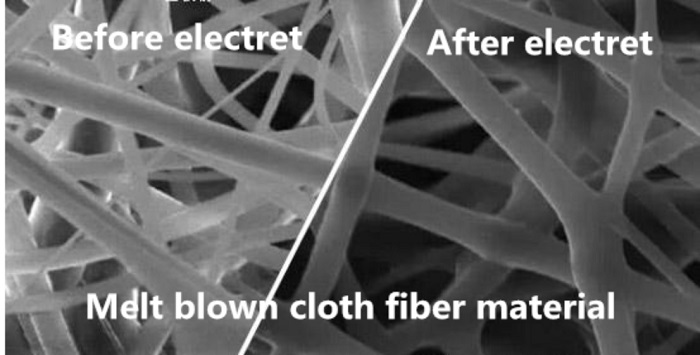
The electret treatment can greatly improve the filtration efficiency without changing the breathing resistance, and the higher the electret voltage, the higher the material filtration efficiency. Generally, the electret voltage should be 30Kv-60kv, and the electret time should be more than 20 seconds.
The final medical high-melt finger meltblown non-woven fabric material produced.
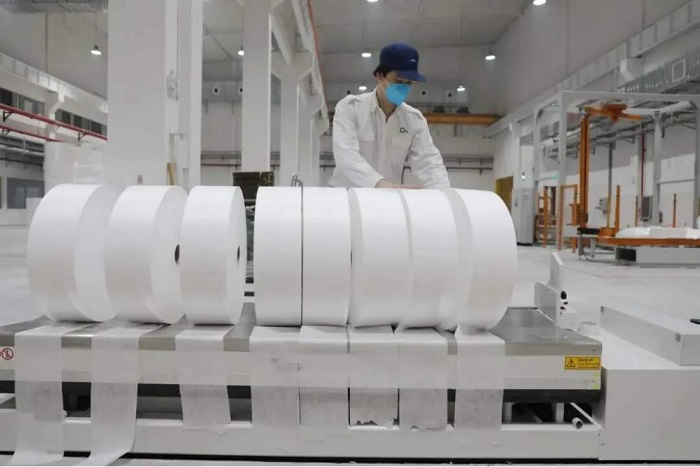
5. Mask production line
After the raw materials are ready, they are put into the integrated smart mask production line to automatically produce finished masks.
The production process of the flat face mask machine is as follows (1+1 production speed up to 120 pieces/minute, 1+2 production speed up to 160 pieces/minute):
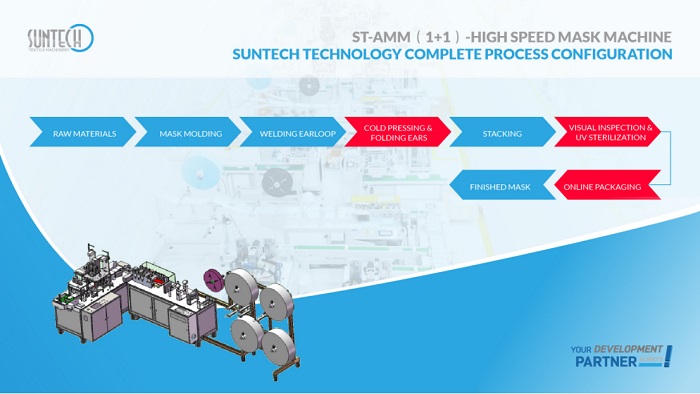
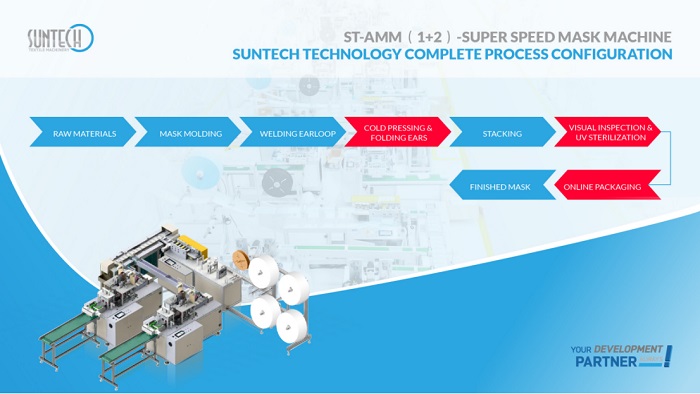
(ST-AMM mask machine,Click to contact)
N95 mask machine production process (earloop type production speed up to 70-80 pieces/minute, head strap type production speed up to 45-50 pieces/minute):
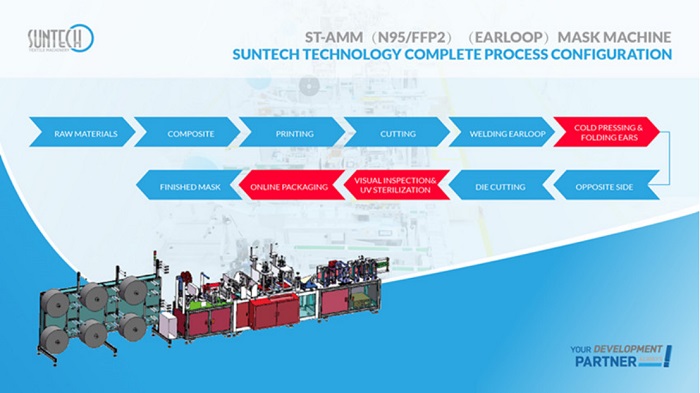
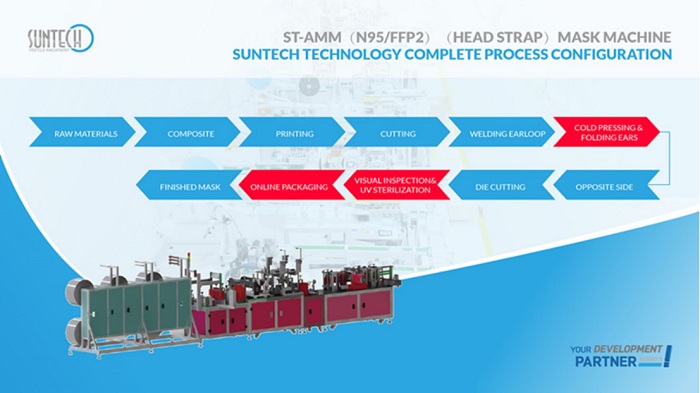
(ST-AMM N95 mask machine,Click to contact)
6. Sterilization, screening, packaging
Normal masks can not be disinfected, but medical masks must be disinfected. The traditional method of disinfection of masks is to place the mask in a 400mg/L ethylene oxide environment, and use alkylation to act on the hydroxyl group to inactivate the microbial macromolecules and achieve the purpose of sterilization.
However, ethylene oxide is not only inflammable and explosive, but also toxic to the human body. Therefore, it needs to stand for 7 days for analysis after disinfection. After the EO residue is lower than the required value, it can be packaged and shipped. Therefore, all units that produce medical masks must have a "Medical Device Operating Enterprise License."
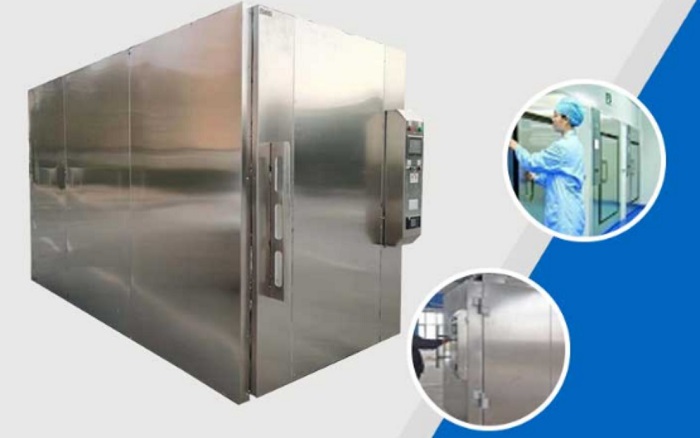
Since ethylene oxide is also a carcinogen, the masks must be sent to the Quality Supervision Bureau for inspection and can only be sold if they meet the requirements of the international standard ISO11135:2014.
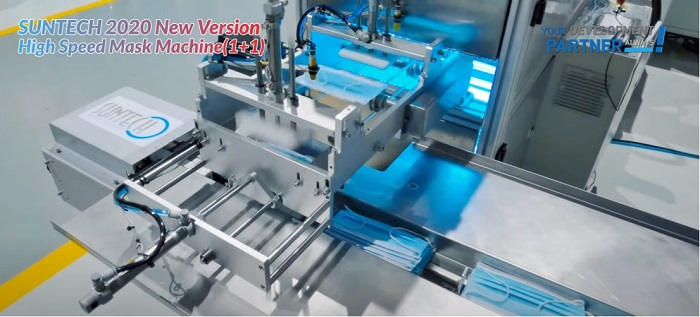
It can be seen that the traditional ethylene oxide disinfection method may not only leave harmful substances and complicated processes, but also consume time and manpower. At present, Suntech has implanted the "UV sterilization and disinfection" function in the integrated intelligent mask machine, which directly sterilizes the mask during the production process, which not only saves labor and time, but also has no residues in UV sterilization, which is very safe and the finished mask can be easily Passed inspection.
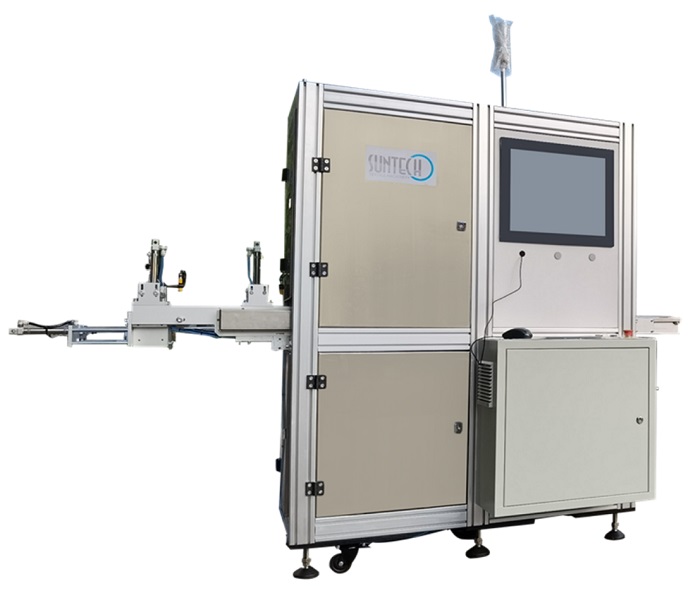
It can be seen that the production of masks in China is relatively mature at present, with raw materials, process technology and product checks in place. After the introduction of intelligent mask machines, the production speed of masks has been greatly increased. The production capacity can not only be self-sufficient, but can also be supplied to the world. People who need masks everywhere.
